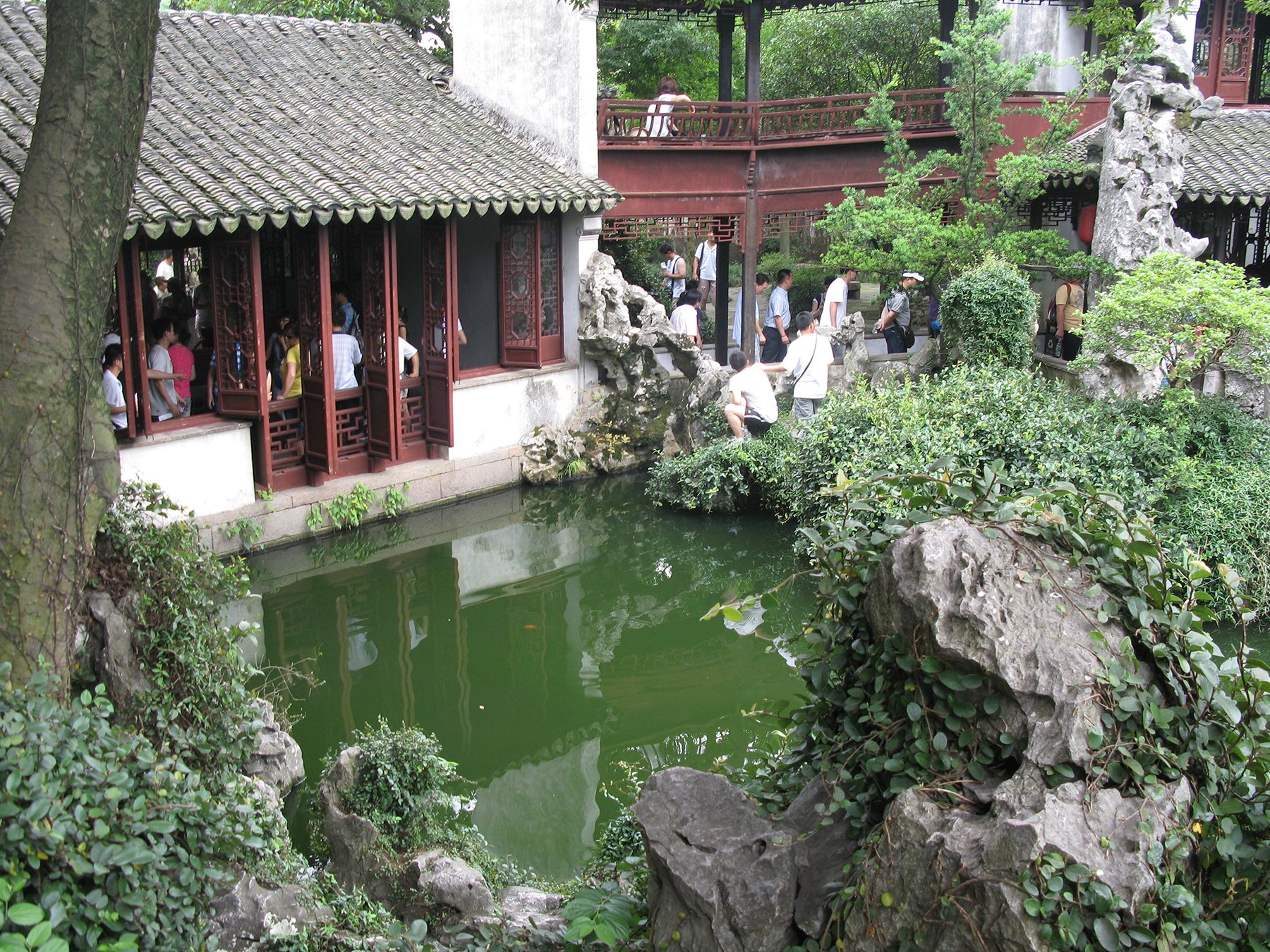Sandra Eula Lee on the Reflecting Pond
Sandra Eula Lee, Alley garden, Beijing, China, 2011
Sandra Eula Lee, Furniture garden, Beijing, China, 2012
Moving between cultural contexts involves constant reorientation. I’m often trying to find a meeting ground between seemingly contradictory states. As a Korean-American daughter of immigrants, migration stories surrounding our divided family were central to the urgency with which we approached life. Years later, I found myself making the reverse journey, living and working in Seoul and Beijing where neighborhoods changed frequently with demolition, and mountains of construction materials accumulated amid the displacement.
Impromptu gardens were often the creative response I encountered in between these sites of change. Neighboring residents created them with found materials and varieties of plant matter, using careful placement and inventive applications. These garden hacks were made for contemplation, a claiming of space from the in-between. Over the years, I internalized a new tempo: concrete buildings were made ephemeral through cycles of demolition, while gardens came back through care and resiliency.
Sandra Eula Lee, Couple’s Garden, Suzhou, China
In his book The Burnout Society and The Scent of Time, Korean-German philosopher Han Byung Chul outlines different notions of time, from experience and knowledge, which are time-intensive, to information and data that are empty of time and a reflection of our rapid acceleration. Art and creative response provide an antidote to the acceleration and, for me, gardens provide an ideal space for reflection. East Asian gardens traditionally have a central pond or lake that provides an empty space to mirror back the view. Each time I experience the sensation of this open pond in the midst of layered and textured rock, plant, and intricate stonework, I am blown away. Yet, they are designed to merely frame and reflect back what is there.
Giuseppe Penone, Reversing One's Eyes/Rovesciare i propi occhi, 1970. (Archivio Penone)
Nam June Paik, TV Buddha, 1974
There are works by Giuseppe Penone that stay in my mind. One such piece is To Reverse One’s Eyes, a photograph of the artist wearing mirrored contact lenses that reflect back the gaze. The lenses act as a kind of threshold between the interior self and the outside world, making things porous. This meeting ground between seemingly contradictory states speaks a language I can feel: what remains constant when our view is reoriented? I am reminded of Nam June Paik’s TV Buddha, where a statue reflects on a technological image of itself, creating loops between the present moment and its physical state across time.
Sandra Eula Lee, Couple’s Garden, Suzhou, China
Time is framed and transcended in Tapsa temple. Starting at 25-years old, Yi Gap-Yong spent 30 years creating over 100 pagodas of carefully stacked and balanced rocks, 80 of which still exist today. Yi chose the space between the ears of Maisan, or Horse Ear Mountain, to meditate and cultivate himself. He later became a monk. Tapsa’s structures defy physical logic: Bbuilt by his hand, without mortar, some reach up to 30 feet tall, and they have endured. When I visited the site in 2009, I was overwhelmed and disoriented by Yi’s rock garden with its incredibly time-intensive focus. There was a vibrating sensation within the stillness of his stones.
Finally, recalling these art works, I am brought to Marisa Merz’s exhibition at the Met Breuer, The Sky is a Great Space. She created what I consider a domestic garden within her apartment and kitchen using fabric stretched and sewn, copper mesh, and gently sculpted clay. The elements on their own appear humble; however, assembled and carefully placed together, her alchemic touch transforms them. My senses began to attune to their delicate nature, her mark-making, and inventive spatial transitions. A sound of water drew me in, and I encountered a fountain in one of the inner chambers. An incredibly intimate place. I imagine her stringing together moments of time to find a meeting ground between the relentless routine of life and her space for contemplation. The water at the center reflects back her view.
Marisa Merz: The Sky Is a Great Space, Met Breuer (Metropolitan Museum of Art)
Marisa Merz: The Sky is a Great Space (Metropolitan Museum Archive)
Sandra Eula Lee, Sidewalk Soswaewon, 2016, Sidewalk bricks, numerous layers of hand-polished pigment, wood structure
Sandra Eula Lee is a Korean-American artist exploring labor, migration, and material histories. Her sculptures, installations, and drawings have been exhibited internationally including a 10-year survey at The Hilliard Museum at UL Lafayette; The Martin Art Gallery at Muhlenberg College, PA; Art Space Pool in Seoul, South Korea; Inside-Out Museum in Beijing; DadaPost in Berlin; Allen Memorial Art Museum at Oberlin College; and Goucher College in Baltimore. Lee is head of Visual Arts at Montclair State University. She has an upcoming exhibition opening this April in Philadelphia at the Leonard Pearlstein Gallery, Drexel University.









